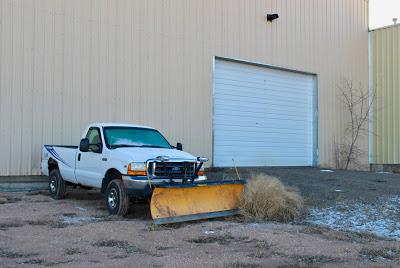 Another month has passed and I feel it. Perhaps this is an age-thing: already another month! so much to do yet!! etc. But the boxelder I’m following seems oblivious to the passage of time. It stands unchanged month-to-month, and barely moves even when the wind is howling, apparently protected there in its corner.
Another month has passed and I feel it. Perhaps this is an age-thing: already another month! so much to do yet!! etc. But the boxelder I’m following seems oblivious to the passage of time. It stands unchanged month-to-month, and barely moves even when the wind is howling, apparently protected there in its corner.But its neighborhood changes. Most recently, someone parked a pickup equipped with a snowplow nearby. We’ve had so little snow this winter, maybe that’s why it was left there—nothing to do. Now it’s gathering tumbleweeds.
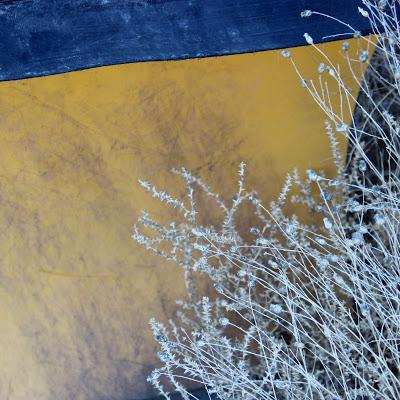
Russian thistle, Salsola kali, in center. Seed heads upper right are from an unknown plant.
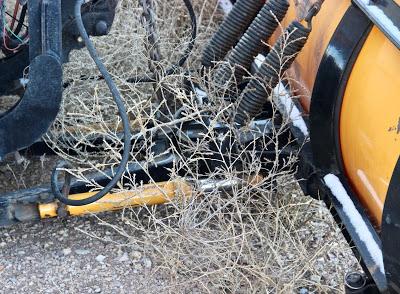
If you park on the west side of a building on the west edge of town, tumbleweeds soon accumulate.
I recently posted about tumbleweeds as urban plants at my other blog, the one I (and readers) largely ignore. It was about the tumbleweed world we live in here on the west side of Laramie. This was my contribution to a neat monthly meme hosted by Lucy of Loose and Leafy in Halifax. If you enjoy tree-following, you might also find street plants of interest. More here.When I looked more closely, I discovered that what I thought was a large tumbleweed was actually a rooted plant that the driver parked adjacent to, enhancing the tumbleweed trap. Its seed heads are visible upper right in the closeup photo above.
Part tumbleweed, mostly something else.
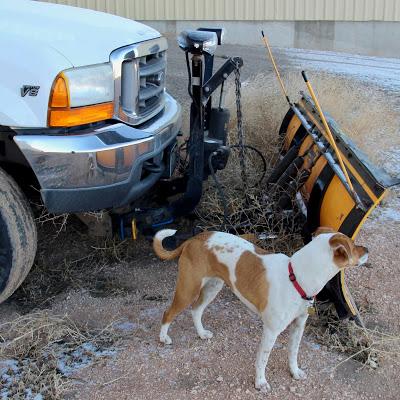
Tumbleweed trap with unknown plant behind, field assistant in foreground.
I didn’t recognize the plant, so I brought some heads home to examine. I knew it was a composite (family Asteraceae), and figured it probably was a “weed.” So I searched through my copy of Weeds of the West. As always when I browse this book, I was soon disgusted by how many perfectly fine native plants are included as “weeds.” But the photos and descriptions are good (it's now free online, use link above).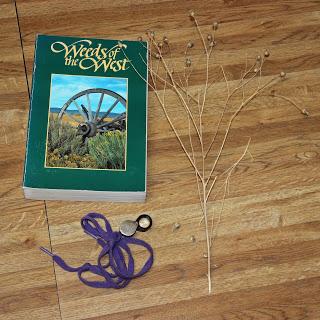
Tools of the trade.
My specimen was poor—old dried wind-beaten seed heads, no leaves. But it looked a lot like what we call Russian knapweed, which I thought was Centaurea repens. But of course plant taxonomy doesn’t stand still. In 1995, Centaurea repens became Acroptilon repens. In 2006, it was renamed again: Rhaponticum repens. Both newer names are currently used in various official lists (e.g. here and here). Frequent taxonomic revision frustrates some of us who were told that scientific (Latin) names were worth learning because they avoid the ambiguity and multiplicity of common names … yeah, right :( But I’ve been assured several times that plant nomenclature is beginning to stabilize, so I try to be patient.I do like the alternative common name for Russian knapweed and several other knapweeds: HARDHEADS! After a bit of googling, I found this explanation:
“If you pinch off an old flower head in the autumn, pull off any loose seed heads, there is a very hard kernel. If you then carefully split this there is a good chance that there will be a small grub inside. Goldfinches can often be found feeding on these grubs.”I found no hard kernels but then I didn’t have much material. Also, the grubs might be specific to Centaurea nigra, which is also called hardheads. Fortunately for me, the repens hardheads (I can’t resist this name :)) is a perennial. So if my id is correct, I should be able to follow it as well as the boxelder. I say “fortunately for me” because most people who know Russian knapweed hate it. It's considered a horrible invasive in North America, and is designated noxious in 46 of the 50 US states. But as with the boxelder, I’m hoping no one notices hardheads here in its urban hideaway.
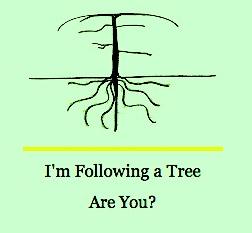 Thanks to Pat of The Squirrelbasket for hosting our monthly tree-following gatherings. For the latest news from followers far and wide, read here.
Thanks to Pat of The Squirrelbasket for hosting our monthly tree-following gatherings. For the latest news from followers far and wide, read here. 